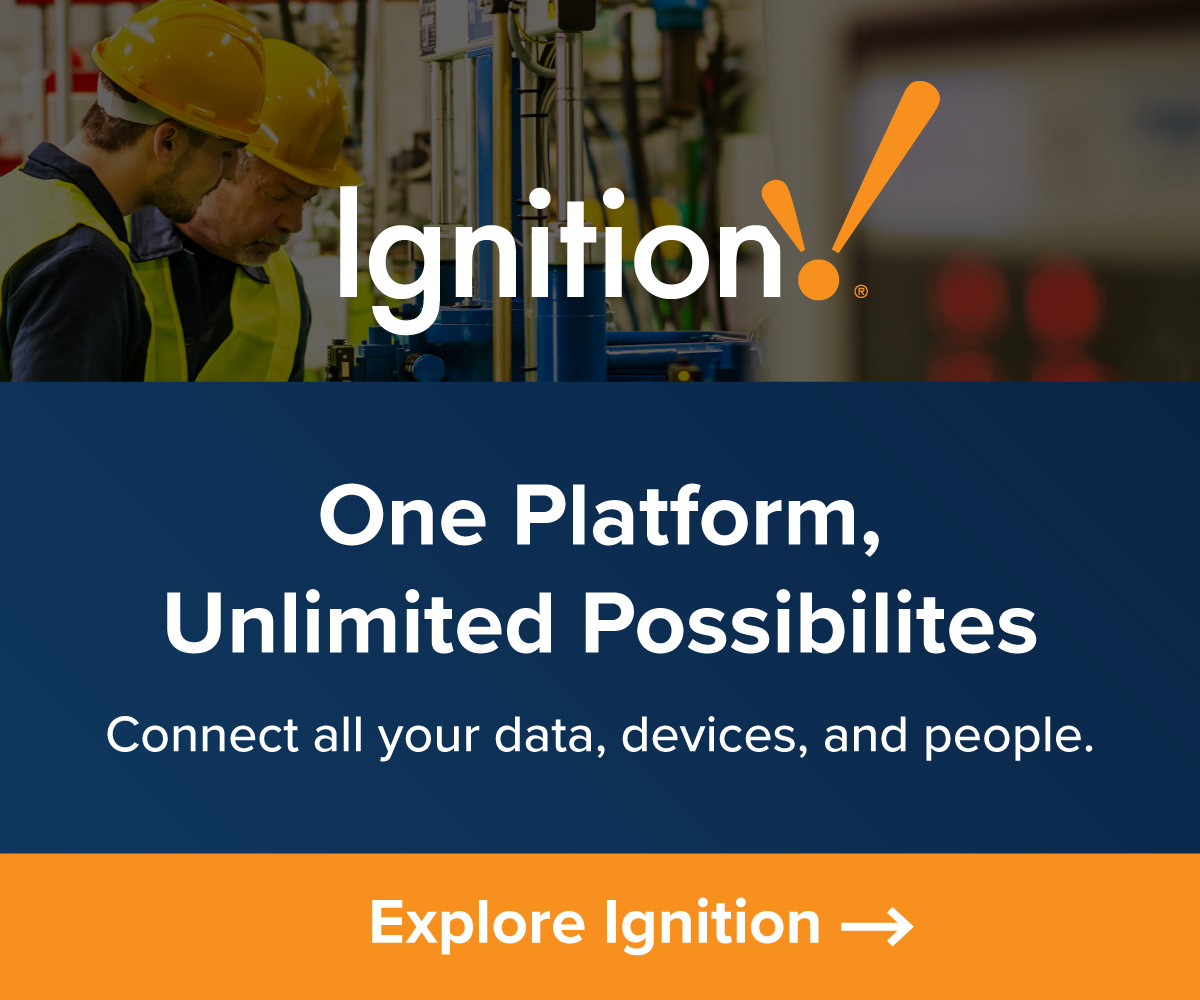by Gary Mintchell | Jun 18, 2025 | Security, Services
Speaking of Honeywell from yesterday’s post, here is another release, this one from their User Group meeting that are, of course, announcing AI use cases. They bring in another buzz word from the automation market—autonomy.
Announcements include:
AI-enabled cybersecurity solutions—Honeywell Cyber Proactive Defense and Honeywell OT Security Operations Center.
Expansion of the Honeywell Digital Prime platform to encompass an enterprise-wide set of solutions that effectively test and modify engineering projects before implementation.
Some details:
- Honeywell Cyber Proactive Defense, which is designed to enhance cybersecurity for industrial environments by proactively identifying and mitigating potential cyber threats before they manifest into attacks. By utilizing AI and behavioral-based analytics, the solution helps detect anomalies in OT cyber behavior by establishing a comprehensive baseline of system operations and then provides actionable insights designed to strengthen OT cyber defenses. The software also features deception technology, which uses decoys within the network to help divert attackers from valuable assets.
- Honeywell OT Security Operations Center, a vendor-agnostic and agentless service designed to provide industrials with advanced capabilities tailored to OT environments to monitor for early signs of a cyberattack. The offering integrates on-site incident management services, providing a 24/7/365 holistic view of the cyber threat landscape for users.
- Honeywell Digital Prime Ecosystem, which now features three core Honeywell offerings – Solution Enhancement Support Program (SESP), Enabled Services and Assurance 360 – in one platform. Through consolidation, users can now leverage deep domain knowledge to optimize control systems and improve maintenance and operational effectiveness across an entire organization. It will also offer near real-time performance insights that can help users achieve desired outcomes more quickly, while requiring less reliance on the technical expertise of an experienced workforce.
Honeywell Cyber Proactive Defense and OT Security Operations Center are now available globally. The expanded version of the Honeywell Digital Prime ecosystem will be available to customers in Q4 2025.
by Gary Mintchell | Jun 10, 2025 | Manufacturing IT
Probably 90% of the press releases I have been receiving manage to work AI into the story. Most refer not to the Large Language Models that have captured the imagination of the tech press. The most useful are machine learning (ML) and some pattern matching that we’ve had for decades.
That’s OK. Just read through the hype focusing only on the application. Is it real? Is it useful? Does it solve a customer need? This is a story from Siemens about a customer actually using one of its “AI” products.
- Senseye Predictive Maintenance significantly improves machine maintenance at Sachsenmilch with AI-powered prediction algorithms
- Early detection of the end of service life of a pump; pilot project pays off
- More automation is planned by integrating Senseye Predictive Maintenance with SAP Plant Maintenance (SAP PM)
Siemens has been supporting Sachsenmilch Leppersdorf GmbH milk processing plant in Germany on its path toward developing a predictive maintenance system. Siemens’ AI-powered solution, Senseye Predictive Maintenance, helps Sachsenmilch ensure continuous operation 365 days a year following strict quality standards.
Sachsenmilch produces a variety of products from milk, butter, yogurt, cheese, and dairy derivatives for baby food to bioethanol in its state-of-the-art and almost fully automated facilities. Every day 4.7 million liters of fresh milk are delivered for processing, the equivalent of 170 truckloads. It’s essential for the company’s equipment to operate 24/7 and for the production facilities to be nearly 100 percent available.
The production environment at Sachsenmilch in Leppersdorf features modern interconnected machines that generate large volumes of data – an ideal setting for a pilot project using Senseye Predictive Maintenance, the advanced predictive maintenance solution.
Senseye Predictive Maintenance utilizes AI algorithms to identify both immediate and future machine issues, which allows proactive maintenance to be performed and prevents downtime. This capability has proven to be extremely valuable in Sachsenmilch’s heterogeneous production environment during the pilot project.
One of the biggest challenges was analyzing relevant plant data like temperature, vibration levels, and frequencies to detect anomalies early on and draw the right conclusions. The implementation process involved a careful analysis of specific failure scenarios and the integration of existing data from the control system. New vibration sensors and the Siplus CMS 1200 measurement system for vibration monitoring were also installed.
Siemens supported the maintenance team at Sachsenmilch with technical and project management expertise. “What we like about this project is that Siemens has know-how on both the technological and the technical sides as well as in project management,” said Roland Ziepel, Technical Manager and head of project management at Sachsenmilch in Leppersdorf. After being trained and the solution’s implementation, the Sachsenmilch team was able to independently continue and successfully complete the pilot.
The pilot with Senseye Predictive Maintenance has already achieved significant cost savings by reducing unplanned downtime. “We can confirm that the pilot project with Senseye Predictive Maintenance has already paid off. Detecting a faulty pump at an early stage saved us a lot of expense – in the low six figures,” Ziepel concluded.
Building on this success, Sachsenmilch plans to further integrate Senseye Predictive Maintenance with their SAP Plant Maintenance System, with the goal of automatically transferring maintenance notifications from the Siemens solution to SAP Plant Maintenance to improve maintenance planning.
In addition, recommendations for data-driven maintenance provided by the Maintenance Copilot Senseye should also be increasingly utilized to help maintenance teams with their work. This is one of the ways that Siemens supports its customers in their innovative and integrated approach to maintenance in order to ensure their long-term operational success.
by Gary Mintchell | Jun 3, 2025 | Generative AI
My last post considered the future of Generative AI.
It has become impossible to maintain thinking about AI at the pace of hype speed. While on vacation last week, a couple of new items popped across my screen in the brief times I was online.
These items refer to the relationship of jobs and AI. One is from a pessimist who sees only gloom. This news item from Axios was picked up by MAGA commentator Steve Bannon among others. The fear seems to cross party and demographic lines. The Axios headline (White Collar Bloodbath) was clearly designed for maximum fear leading to clicks and views.
As much as I like Axios as a news source, I continue to detest their click-bait and journalist over-hype headlines. Still, an interview contending the end of entry-level white collar jobs (probably too exaggerated).
Dario Amodei — CEO of Anthropic, one of the world’s most powerful creators of artificial intelligence — has a blunt, scary warning for the U.S. government and all of us:
- AI could wipe out half of all entry-level white-collar jobs — and spike unemployment to 10-20% in the next one to five years, Amodei told us in an interview from his San Francisco office.
- Amodei said AI companies and government need to stop “sugar-coating” what’s coming: the possible mass elimination of jobs across technology, finance, law, consulting and other white-collar professions, especially entry-level gigs.
Sure, we’ve seen clueless managers mandating programmers use of AI in order to get more work out requiring fewer programmers. Certainly AI is a useful tool for programmers, but it certainly doesn’t replace the vision of what to program and how to best assemble routines.
No good journalist writes a piece with a point-of-view. They must always “balance” views. In this case they quote Sam Altman:
The other side: Amodei started Anthropic after leaving OpenAI, where he was VP of research. His former boss, OpenAI CEO Sam Altman, makes the case for realistic optimism, based on the history of technological advancements.
“If a lamplighter could see the world today,” Altman wrote in a September manifesto — sunnily titled “The Intelligence Age” — “he would think the prosperity all around him was unimaginable.”
Remember that Altman’s job is to project optimism and a profitable future since he’s in capital-raising mode.
Meanwhile, economics Nobel Laureate Daron Acemoglu challenges the AI revolution narrative with data-driven predictions and business advice. He takes a common sense approach to statistics and analysis similar (but far superior) to what I used back in my analyst days (not working for a firm, but performing analysis for executive decision making). His analysis was reported in the MIT Sloan Management Review.
Nobel Prize-winning economist Daron Acemoglu challenges the AI revolution narrative with surprising data: AI will likely automate just 5% of tasks and add only 1% to global GDP this decade. And where the internet’s potential was clear early on, AI’s is not, and the technology has yet to deliver applications that can transform production or create valuable new services.
Acemoglu reveals which roles face automation risk while explaining why jobs requiring judgment and social intelligence remain safe. His advice for leaders:
- Resist hype-driven investments and competitive pressure.
- Focus on creating new services, not just cutting costs.
- Use AI to augment human workers, not replace them.
- Partner with skilled employees to identify valuable AI applications.
This research-backed perspective cuts through speculation while acknowledging AI’s potential when it’s deployed strategically.
What he did was step back and look at all jobs, then the percentage that might be affected by AI one way or another and then continue to filter. Rather than “bloodbath”, he looks at sectors that may be affected.
by Gary Mintchell | May 27, 2025 | Business, Generative AI
Cal Newport, computer science professor at Georgetown and prolific workflow and lifestyle wrier, discussed another aspect of GenerativeAI on his May 26 podcast. His currently thinks generative AI companies will start making money when people use it several times daily like they use Google search. Responding to reports that OpenAI sells $20,000 licenses to companies for specialty usages, he responds that ChatGPT and its competitors must become so usable that they reach a critical mass of daily users.
That’s not even close to happening right now—at least according to an analyst report I frequently receive purporting to show LLMs make little dent in Google search numbers..
Analyst Ben Evans recently released an essay with statistics from 2024 about daily average use (DAU) and weekly average use (WAU) of AI.
Generative AI chatbots might be a life-changing transformation in the nature of computing, that can replace all software, but so far, most of its users only pick it up every week or two, and far fewer have made it part of their lives. Is that a time problem or a product problem?
The proportion of daily users to weekly users is astonishingly small.
But another reaction is say that even with those advantages, if this is a life-changing transformation in the possibilities of computing, why is the DAU/WAU (daily average useage/weekly average usage) ratio so bad? Something between 5% and 15% of people are finding a use for this every day, but at least twice as many people are familiar with it, and know how it works, and know how to use it… and yet only find it useful once a week. Again, you didn’t have to buy a thousand dollar device, so you’re not committed – but if this is THE THING – why do most people shrug?
Media coverage and hype could lead one to believe that everyone uses these tools. But, no.
DAU is everything. Sam Altman knows this – he was trying to build a social media app at the time, and yet the traction number he always gives is, well, ‘weekly active users’. That’s a big number (the latest is 1bn globally)… but then, why is he giving us that number instead of DAUs? If you’re only using ChatGPT once a week, is it really working for you?
Evans asks, is it a people problem or a product problem? We just have not found a sufficient use case to integrate ChatGPT into our daily workflow. That’s a problem for those companies.
by Gary Mintchell | May 19, 2025 | Generative AI
AI Agents (aka AgenticAI) continue to find their way into the news. At least we are finding some reality amongst all the AI hype. This news concerns improving MRO operations.
[All hyperbole from the press release.]
Verusen launched its groundbreaking Explainability AI Agent for data and context-driven material and inventory optimization. This first-of-its-kind capability delivers unprecedented transparency into Verusen’s stocking policy recommendations, enabling procurement, operations, and supply chain teams to trust, understand, and confidently act on AI-driven insights, accelerating smarter execution and enterprise-wide alignment.
Verusen’s Material Graph — the world’s largest MRO materials knowledge base — has ingested over 41 million unique SKUs, $12 billion in annual inventory and spend, and all associated transactional POs. This powerful platform redefines how asset-intensive enterprises manage critical materials inventory, procurement, and risk across their global MRO supply chains.
By integrating Large Language Models (LLMs), Machine Learning, and Natural Language Processing technologies, Verusen transforms manual, disconnected inventory management practices into streamlined, context-rich optimization strategies—empowering teams to make smarter decisions faster while reducing risk and operational costs.
Enterprises adopting AI for MRO management often struggle with the “black box” problem—trusting recommendations without understanding the logic behind them. Verusen’s Explainability AI Agent eliminates this barrier by providing clear, concise insights into every recommendation’s rationale, supported by a powerful feedback loop that continuously learns and adapts based on user interactions.
Unlike traditional AI platforms—or even today’s general-purpose generative AI tools—Verusen’s Explainability Agent is task-driven to deliver clarifications and explanations to users. It examines model inputs, outputs, and logic to surface tailored insights directly within the platform, ensuring every decision is rooted in transparency and context.
Verusen’s Explainability AI Agent is part of the company’s broader commitment to responsible AI, ensuring that solutions are secure, accountable, and enterprise-ready from day one. Key pillars of Verusen’s responsible AI design include:
- No exposure of Customer data to third-party LLMs
- Built-in Explainability, not bolted-on as an afterthought
- User-in-the-loop feedback models that improve recommendations over time
by Gary Mintchell | May 16, 2025 | Generative AI
Finishing Agent Week at The Manufacturing Connection with this news from Siemens introducing agents for automation on its Xcelerator platform They claim up to 50% increase in productivity. I guess this would involve productivity across five disciplines detailed below.
The agents are designed to work across its established Industrial Copilot ecosystem.
This new technology represents a fundamental shift from AI assistants that respond to queries towards truly autonomous agents that proactively execute entire processes without human intervention. Siemens’ new AI agent architecture features a sophisticated orchestrator. Like a craftsman, it deploys a toolbox of specialized agents to solve complex tasks across the entire industrial value chain. These agents work intelligently and autonomously – understanding intent, improving performance through continuous learning, and accessing external tools and other agents as needed. Users retain complete control, selecting which tasks they wish to delegate to AI agents.
Siemens’ approach distinguishes between Industrial Copilots, the interfaces users interact with, and the AI agents that power them behind the scenes. Furthermore, the company is developing digital agents, and integrating physical agents, including mobile robots. This way, Siemens is creating a comprehensive multi-AI-agent system where agents are highly connected and work collaboratively.
Here’s a question I often ask only to receive unsatisfactory answers. What makes your offering different?
What sets Siemens’ approach apart is the orchestration of these agents utilizing a comprehensive ecosystem. These agents not only work with other Siemens agents but also integrate with third-party agents, enabling unprecedented levels of interoperability.
The five parts of Siemens ecosystem:
- Design Copilot: Currently available for NX CAD, helps users break new ground in creativity by accelerating the product design process. The AI-powered assistant enables users to ask questions in natural language, quickly access detailed technical insights, and streamline complex design tasks – all leading to significant efficiency gains in product development. Siemens is also currently developing a Hydrogen Configurator for designing hydrogen production plants.
- Planning Copilot: Currently in pre-release with customer testimonials already available, this solution optimizes production planning, resource allocation, and scheduling through generative AI-powered insights, helping manufacturers maximize efficiency and minimize waste.
- Engineering Copilot: Available for TIA Portal with Managed Service coming in 2025, it enables engineering without repetitive tasks. As the first generative AI-powered product for automation engineering, it empowers engineers to generate automation code through natural language inputs, speeding up SCL code generation while minimizing errors. In process industries, the copilot for P&ID Digitalization has already been tested by several customers. It’s an AI-assisted P&ID detection cloud service to digitalize and consolidate legacy P&ID diagrams.
- Operations Copilot: Currently available for Insights Hub, the Copilot provides holistic insights into the entire plant. In addition, at the machine level, Siemens is planning to introduce an Operations Copilot for shop floor workers, which will be available by the end of 2025. This new product is designed to empower shop floor operators, service technicians, and maintenance engineers to work more efficiently by querying machine data and receiving error resolution guidance through natural language. The Operations Copilot can be easily implemented at the machine level to provide machine instructions and operator guidance. For the process industries, the generative AI-based assistant Simatic eaSie, enables technicians and maintenance personnel to access relevant plant and equipment data via chat or voice interaction. This makes operations and maintenance more reliable and safer both in the control room and in the field.
- Services Copilot: The Maintenance Copilot Senseye provides maintenance teams with expert-level equipment diagnostics without the need for specialized technical knowledge. Recently expanded beyond predictive maintenance to cover the entire maintenance lifecycle, this solution supports everything from reactive repairs to predictive and preventive strategies, with pilot implementations demonstrating an average 25% reduction in reactive maintenance time.




